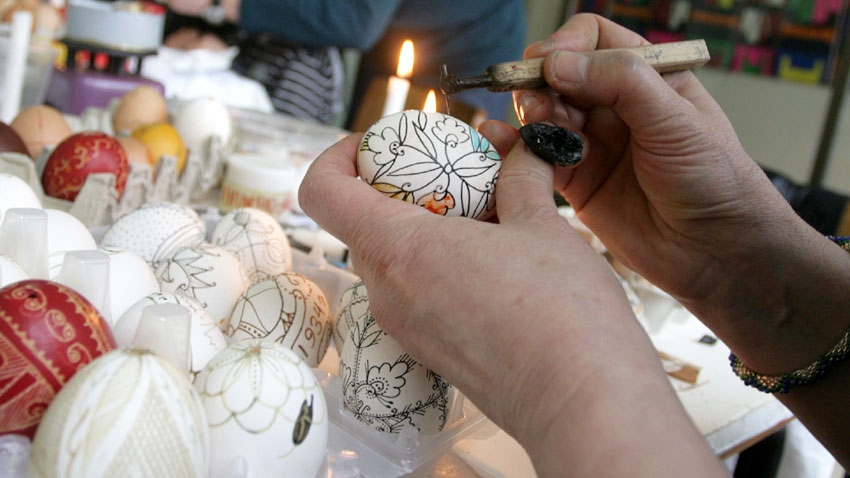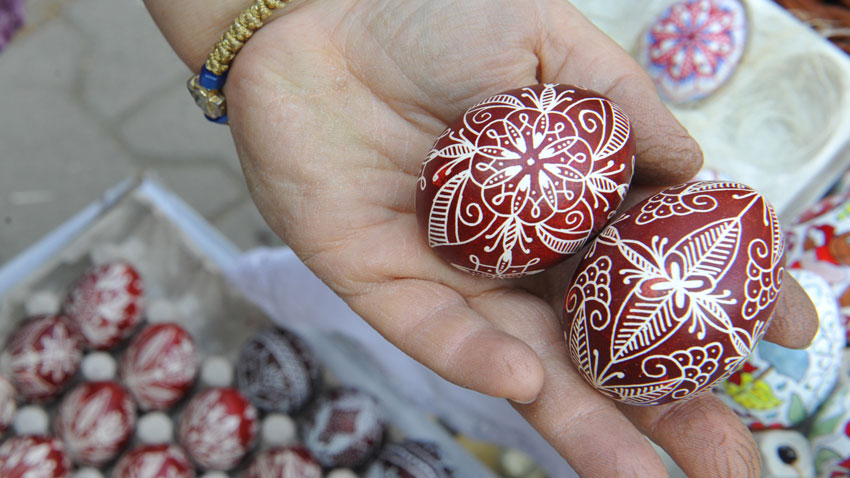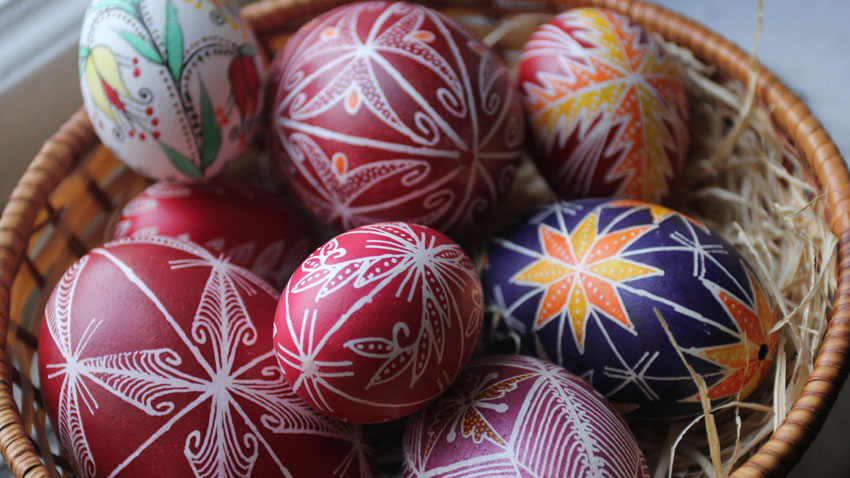It is not known when dyeing and decorating eggs started. There are historical data that people decorated eggs and gave them as gifts in ancient Egypt, Persia, Rome, China and Greece. The rituals related to eggs symbolise fertility and purification. Giving red-painted eggs for Easter is one of the oldest customs, which was embraced by all Christians worldwide.
Initially, eggs were dyed in red only. The color is a symbol of both the blood of Christ and of God's love for people. Today, Easter eggs are dyed in various colors, but according to the Orthodox tradition, the first is always red.
Along with the ritual of egg dyeing for Easter, a local tradition has developed in Bulgaria and strengthened over the years – using hot wax to decorate the eggs. The skilful hands of masters transform ordinary eggs into real works of art. Seeing the creation of such a special egg is something one does not often see.

Masters of the technique from the mountainous town of Velingrad are well respected. Here preparation for Easter starts at some 40 days before Easter. Wax decorations are drawn on the white eggs the. The true beauty of the eggs is seen on Holy Saturday when the eggs are immersed in the dye and one can see the exquisite decorations as the dye does not stick to wax. "This technique has been used since ancient times in Velingrad. Such eggs were also created in the second half of the 20th century when because of ideological reasons Christian rituals were denied," Tsvetanka Grozeva, master of the technique says. She has many young followers in the town:
 "During Easter in Velingrad everyone has the hope for the coming of better days. The quest for beauty and harmony of the people is expressed through drawing on the egg shell. Ornamentation consists mostly of flowers and plants, symbolising fertility and man's relationship with nature. Everyone is free to add their own styles on an egg. This way each egg is different and brings the spirit and mood of the person who painted it. Early eggs were written on with beeswax - pure product which we take from nature. The figures are drawn with a wooden pen heated over a candle. New technologies are also used these days – such as electric drawing instruments, which allow very precise drawings. The wax used is milky white in colour. Preparations start on St. Theodore’s Day, also called by people Little Easter. The dye in the past was obtained by natural materials, today we use paints that are sold in stores."
"During Easter in Velingrad everyone has the hope for the coming of better days. The quest for beauty and harmony of the people is expressed through drawing on the egg shell. Ornamentation consists mostly of flowers and plants, symbolising fertility and man's relationship with nature. Everyone is free to add their own styles on an egg. This way each egg is different and brings the spirit and mood of the person who painted it. Early eggs were written on with beeswax - pure product which we take from nature. The figures are drawn with a wooden pen heated over a candle. New technologies are also used these days – such as electric drawing instruments, which allow very precise drawings. The wax used is milky white in colour. Preparations start on St. Theodore’s Day, also called by people Little Easter. The dye in the past was obtained by natural materials, today we use paints that are sold in stores."
Tsvetanka says she learned to draw on eggs as a child, watching her mother do it. It was at that time when the Easter spirit became part of me and to this day I continue to draw on eggs, Tsvetanka Grozeva says and adds.
"Every year an Easter workshop is organised in the Vasil Levski High School in the town. There people can try wax decorating. I see that not only girls but also boys are interested in this art. The tradition is fascinating and it attracts more and more young people.”

The Easter holidays and the egg dyeing traditions in Velingrad attract hundreds of people to the town. A day before Easter people gather in the town square where women show wax decorated eggs and decorate a huge 100 –kg wooden egg that remains on a prominent place in the town to remind visitors that locals keep preserving the faith and the memory of their ancestors.
English: Alexander Markov
Photos: BGNES